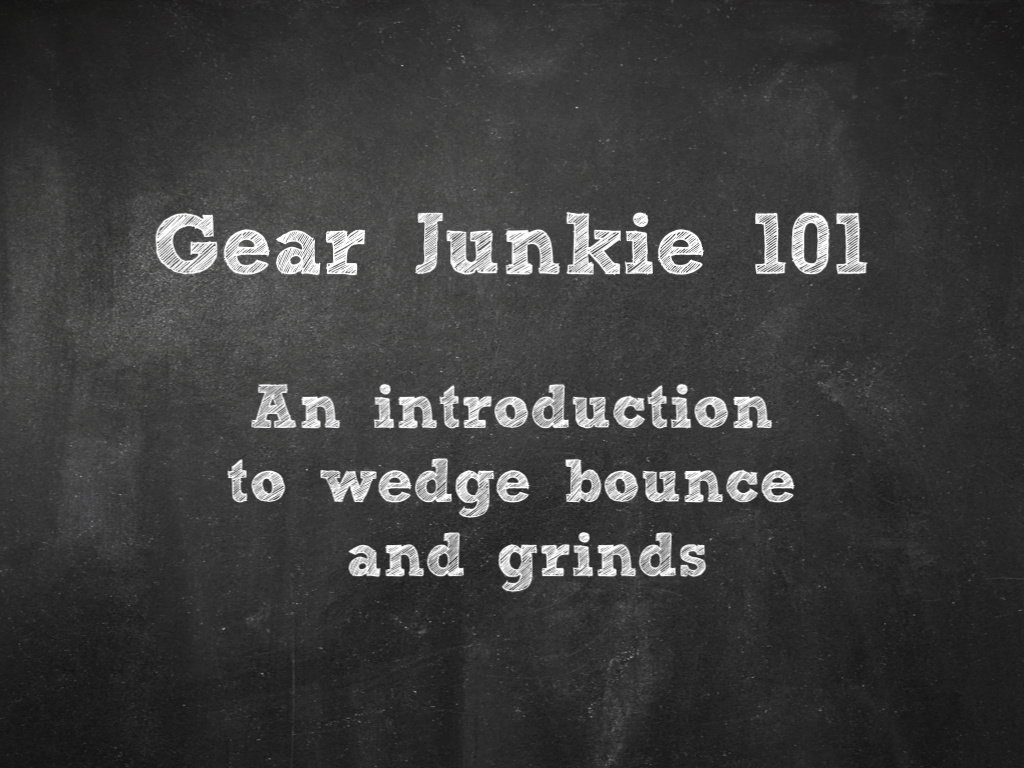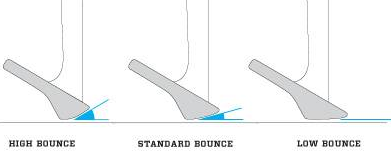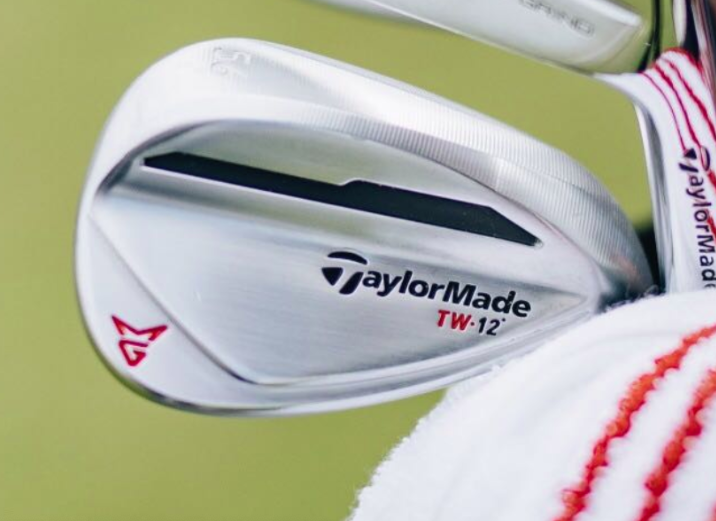Equipment
Gear Junkie 101: An introduction to wedge bounce and grinds

Since I designed my first line of wedges in the late 1980s, I can confidently say that I have interacted with close to a hundred thousand golfers–whether through countless phone calls, to the thousands of golfers I’ve engaged personally, to the online wedge-fitting platforms I have created, to the near-decade of writing my blog as “The Wedge Guy.”
Through all those engagements with golfers of all skill levels, the most frequent topic of conversation, confusion, and exasperation has to be the subject of bounce and grinds on wedges. And it’s no wonder, with the mind-boggling array of bounce/grind/loft combinations offered by the major and minor brands who engage in the wedge category.
I was honored that GolfWRX turned to me to write the first article in their sure-to-be-a-hit series called “Gear Junkie 101.” My goal with this examination of bounce and grinds is to help you develop a complete, and maybe slightly different understanding, of just how the sole of your wedges works and how to tackle the difficult process of finding what specific sole design will work best for you on a day in and day out basis.
What is bounce?
So, let’s start with a basic definition of “bounce.” Very simply, bounce is the downward angle of the sole of a wedge (or any golf club actually) from the leading edge to the trailing edge, measured in degrees from the pure horizontal plane (i.e. the turf). Typically, the bounce angle as it applies to wedges ranges from mid-single digits (5-8 degrees) to the mid-teens (12-15 degrees). It should make sense that the higher the degree of bounce, the more the sole of the club will tend to be “rejected” by the turf.
That’s pretty straightforward, but the subject is anything but that simple.
The “effective bounce” of a wedge is a function of both that measured bounce angle and the width of the sole. For example, a narrow sole with 12 degrees of bounce might perform almost the same as a wider sole with 8 degrees of bounce. In today’s marketplace, there are narrow sole wedges with bounce angles as high as 30-40 degrees, while the early lob wedges had very wide soles and claimed bounce angles of almost zero (they really were not that, of course). Since you are always making some degree of a descending blow to the golf ball, a negative bounce wedge would be more of a shovel than a wedge. Oh, and if part of the sole has a “negative bounce,” where the sole’s surface slants back upwards from the plane of the turf, then that part of the sole is going to have a very minimal effect on turf interaction.
If a picture is worth 1,000 words, this image from golfguideforbeginners.com is certainly helpful.
What are wedge grinds?
Now we can add to this expanding high/low bounce equation the myriad of various “grinds” available to golfers by the numerous companies engaged in the manufacture and marketing of wedges. From the custom world, the options are practically endless, and it appears most of them stem from detailed work with specific tour professionals (more on that later). Some like a sharper leading edge, while others want it more rounded. Some like a pretty straight leading edge, while others prefer some curvature from heel to toe. The options are practically endless when you are standing next to the guy on the wheel actually doing the grinding.
They also talk about “toe relief”, “heel relief” and a nearly whole alphabet of specific grinds – ‘C’, ‘K’, etc. But all these are proprietary references by the manufacturers, and there are no set of “standards” as to what each grind really is. That makes it tough on golfers to figure out what will serve you best. The market leader alone offers at least six different “stock” grinds, and other brands have their own countless variations as well. So how do you make sense of all that and choose the sole design that will serve you best?
I will share that, in my experience, only the very best golfers can really tell the difference between grinds and sole designs that differ only slightly from one another. Because tour players spend thousands of hours honing their wedge skills, they can feel things that are barely measurable. And, of course, the major brands bend over backwards to accommodate their staff professionals. These guys and ladies can fully appreciate the subtle nuances of one wedge to another that might look identical to an untrained eye. A one- or two-degree difference in bounce, or a sole width that is only 50 thousandths of an inch wider or narrower can make a difference to these elite players. But then, they get to test and try wedges provided to them for free, so they can experiment all they want, can’t they?
Leading edge, trailing edge, and heel grinds on Tiger Woods’ 56-degree TaylorMade MG2 wedge.
It has been my observation that even the very best recreational golfers typically do not approach this acute level of skill, but I have seen some that can detect differences that would escape notice of even active recreational golfers of more “average” skills.
I’ll get a bit skeptical here in saying that I have long challenged the notion that bounce can be accurately “fitted” through a simple examination of your swing path and/or the turf. My difficulty with that premise stems from those extensive golfer engagements wherein the vast majority of golfers–regardless of handicap–revealed to me that both turf conditions and their swing path are constantly changing. Hmmmm. Then how could you possibly “fit” either variable? That would be like trying to buy a pair of shoes if your feet were different sizes every day, wouldn’t it?
But you have to start somewhere to sort through the wilderness of bounce angles and grinds, so, let me offer you my advice and see if that can’t help you through the process.
First of all, I believe that the potentially negative effect of the “wrong” bounce is much less on full swing shots than it is on the short delicate shots around the greens–clubhead speed can make up for a lot. Unless the bounce angle of the wedge is just a terrible match to your most common full swing path, I think “close is good enough” in this aspect. In general, however, I think if you play the usually lush turf of the northern U.S., you will benefit from a more aggressive bounce and/or wider sole than if you play the typically tighter turf of the south and southwest.
Please understand that is a generalization, however.
Secondly, I do not believe you can fit bounce off of artificial turf, as even the best mats do not really imitate the real thing, where you will encounter different grasses, grain against and/or with your shot direction, etc. There is simply no substitute for trying different bounce options on the course itself, hitting shots you face regularly from the variety of turf conditions you encounter on a round-in, round-out basis. If you are serious about trying to get the right wedge, you simply have to hit a wide variety of shots with it (or one like it) to see how it performs under all conditions and shot types.
So, if you were looking for a shortcut, I just do not have one. In my opinion, to accurately evaluate any of the various bounce angles and grinds in search of the best wedges for YOU, you must take them to your course and hit the shots you hit regularly to see how they react to YOUR technique and conditions. In this wedge trial and testing process, put most of your focus on your bunker shots and a variety of short shots around the greens. Dollars to donuts says that this process will allow you to find one or two bounce/grind combinations that separate themselves from the pack as best FOR YOU.
Hey, this is golf, and if it was easy, everyone would do it, right?
- LIKE173
- LEGIT35
- WOW8
- LOL4
- IDHT1
- FLOP8
- OB4
- SHANK17
Equipment
Coolest thing for sale in the GolfWRX Classifieds (7/24/24): TP Mills Sycamore Proto putter

At GolfWRX, we are a community of like-minded individuals that all experience and express our enjoyment of the game in many ways.
It’s that sense of community that drives day-to-day interactions in the forums on topics that range from best driver to what marker you use to mark your ball. It even allows us to share another thing we all love – buying and selling equipment.
Currently, in our GolfWRX buy/sell/trade (BST) forum, there is a listing for a TP Mills Sycamore Proto putter.

From the seller: (@mlowrimore): “TP Mills Sycamore Proto Putter
- Oil Can finish
- Plumber’s neck, flange alignment line
- German Stainless Steel
- 355g, 34″ Length
- I’m not sure the loft/lie but guessing 3/70
- Lamkin Deep Etched Black Grip
- TP Mills “mini me” headcover
- True Temper shaft (no bands)
- $850 Shipped”
To check out the full listing in our BST forum, head through the link: TP Mills Sycamore Proto putter
This is the most impressive current listing from the GolfWRX BST, and if you are curious about the rules to participate in the BST Forum you can check them out here: GolfWRX BST Rules

- LIKE0
- LEGIT0
- WOW0
- LOL0
- IDHT0
- FLOP0
- OB0
- SHANK0
Whats in the Bag
Chris Kirk WITB 2024 (July)

- Chris Kirk what’s in the bag accurate as of The Open Championship.
Driver: Callaway Paradym Ai-Smoke Triple Diamond (9 degrees)
Shaft: Fujikura Ventus Blue 6 TX


3-wood: Callaway Paradym Ai-Smoke Max (15 degrees)
Shaft: Fujikura Ventus Blue 8 TX
Irons: Callaway Apex Pro (3), Callaway Apex MB (5-9)
Shafts: Fujikura Ventus Blue (3), Project X LZ 125 6.5 (5-9)

Wedges: Callaway Opus (46-10S @47, 50-10S, 56-12S), Callaway Jaws Raw “S6” (58)
Shafts: True Temper Dynamic Gold S200

Putter: Odyssey Metal X Milled 9HT
Grips: Golf Pride Tour Velvet
Ball: Titleist Pro V1x
More photos of Chris Kirk’s WITB in the forums.
- LIKE3
- LEGIT0
- WOW0
- LOL0
- IDHT0
- FLOP0
- OB0
- SHANK0
Whats in the Bag
Keith Mitchell WITB 2024 (July)

- Keith Mitchell what’s in the bag accurate as of the 3M Open. Obviously, Mitchell is deciding between putters for the week. More photos from the event here.
Driver: Mizuno ST-Z 230 (9.5 degrees)
Shaft: Mitsubishi Diamana WB 73 TX


3-wood: TaylorMade Qi10 (16.5 degrees)
Shaft: Mitsubishi Tensei 1K Blue 90 TX

7-wood: Titleist TS2 (21 degrees, C1 SureFit setting)
Shaft: Mitsubishi Tensei CK Pro Blue 90 TX
Irons: Mizuno Pro 225 (2), Mizuno Pro 225 “KM-92” (4-9)
Shafts: True Temper Dynamic Gold Tour Issue X100

Wedges: Mizuno T24 (46-08S @47, 50-07S @51), Titleist Vokey Design WedgeWorks Proto (60-T)
Shafts: True Temper Dynamic Gold Tour Issue S400

Putter: TaylorMade Spider Tour
Grip: SuperStroke Zenergy Pistol GTR+
Putter: TaylorMade Spider Tour Z
Grip: SuperStroke Zenergy Pistol GTR+
Putter: TaylorMade Spider Tour
Grip: Golf Pride Pro Only

Grips: Golf Pride Victory Cord
Ball: Titleist Pro V1
See the rest of Keith Mitchell’s WITB in the forums.
- LIKE5
- LEGIT1
- WOW0
- LOL0
- IDHT0
- FLOP0
- OB0
- SHANK0
-

 Product Reviews2 weeks ago
Product Reviews2 weeks agoThree Swing Challenge: Testing the Edel Array F-2 putter
-

 Equipment2 weeks ago
Equipment2 weeks agoWhat clubs do equipment free agents choose to use on tour? We found out
-

 News2 weeks ago
News2 weeks agoHighlights from the Wilson Golf Product Testing and Fitting Experience at Pinehurst
-

 News2 weeks ago
News2 weeks agoDavis Thompson’s winning WITB: 2024 John Deere Classic
-

 Equipment3 weeks ago
Equipment3 weeks agoQ&A: The truth behind Bryson DeChambeau’s new Avoda irons from company founder Thomas Bailey
-

 19th Hole2 weeks ago
19th Hole2 weeks agoMajor champ ‘disappointed’ not to be chosen as U.S. Ryder Cup captain
-

 19th Hole2 weeks ago
19th Hole2 weeks agoLIV pro explains how he believes players are ‘cheating’ on DP World Tour
-

 Whats in the Bag3 days ago
Whats in the Bag3 days agoXander Schauffele’s winning WITB: 2024 Open Championship




























William King
Aug 19, 2019 at 7:02 am
First, turf and ground conditions alter and for many players who do not travel, this won’t matter that much. But even for those who do come across great variations in club/turf interaction, it may be better to stick with what you know and are confident with than to change to a club that may theoretically be better for the new conditions.
Secondly, the differences in sand are enormous from course to course, and from dry to wet. That may well make it a good idea to have two or more sand wedges with different bounces.
Harald
Aug 19, 2019 at 6:50 am
Very interesting and clearly stated information. But the expression is either ” guys and dolls ” (and long may Damon Runyon’s memory live), or “ladies and gentlemen”
Keep swinging
Mark Leonard
Aug 15, 2019 at 1:38 am
You mention “…you will benefit from a more aggressive bounce and/or wider sole than if you play the typically tighter ….”. Can you please explain what is meant by “aggressive” in this context?
Jack
Aug 15, 2019 at 3:23 am
Aggressive is high bounce. Cuz if you have a lot of bounce on a tight lie it would be hard to use the bounce without frequent thin bullets across the green. That’s my understanding.
It is confusing to name it that way. Just think high bounce and low bounce. And also effective bounce by how you deliver your chip shots.
Mel B Inglima
Aug 14, 2019 at 3:40 pm
The explanation of the bounce with its picture was helpful. The sole gets “rejected” by the turf. However, the grind discussion, without any picture was less clear.(Tiger’s club picture didn’t fully describe what was going on – I had to use my often wrong imagination!) I’m left to assume that unless I’m a plus handicap golfer or professional, just don’t worry about it! Correct?
As to trying different wedges on the course – whether the actual club you might buy or ones very similar – how do you accomplish this? I’ve found that equipment stores just do NOT want to lend out wedges. Pro shops may from time to time but they have far fewer choices.
So, help! How do I really try out several wedges before buying? I’m not happy with my current wedges but very unsure about buying new ones without significant testing. (I’m a single digit)
Thanks,
Wayne
Oct 17, 2019 at 1:23 pm
I was thinking exactly the same, this article didn’t help one bit, there isn’t much chance of being given a new wedge to go hit off artificial turf at a driving range, never mind being given one to take out and hit off real turf.
Surely there are guidelines to the type of bounce and or grind best suited to a very firm links course compared to a much softer inland course, the same for heavy compact sand or light fluffy type sand.
After reading the last paragraph I’m left wondering how on earth someone can use an online system to find the correct wedge.
Stacey Uchtman
Aug 14, 2019 at 3:31 pm
Do you think a player will “learn” a specific swing based on the wedges they carry? Meaning in the first wedges they carry, do you think they will adjust and learn to play them and eventually be comfortable with that particular bounce/grind making it difficult to move to another combination? Mainly around the greens and less on full shots.